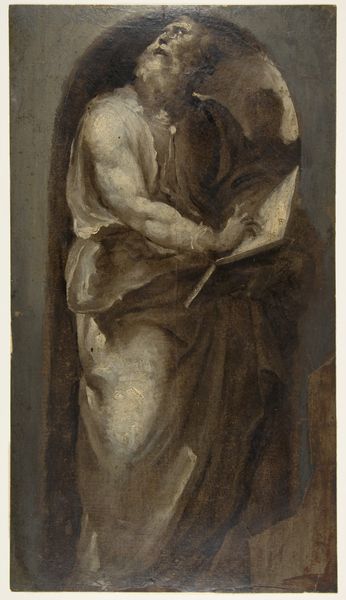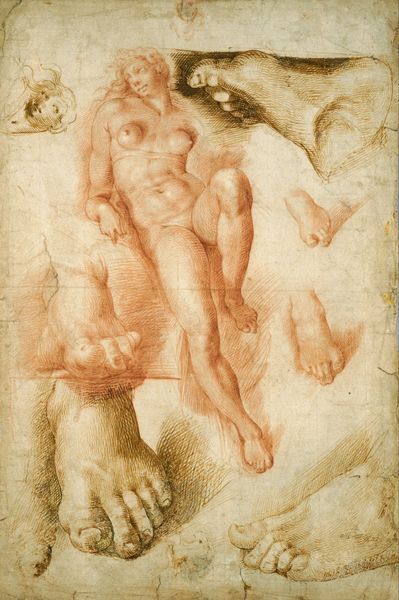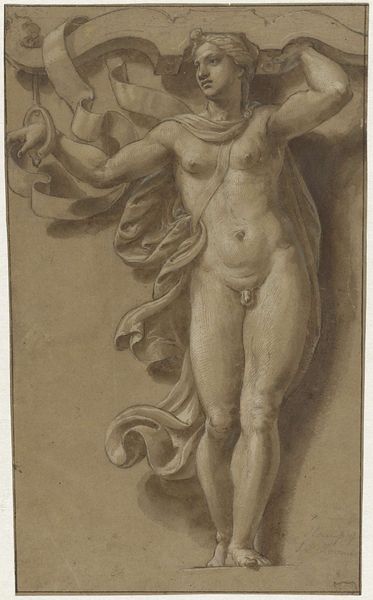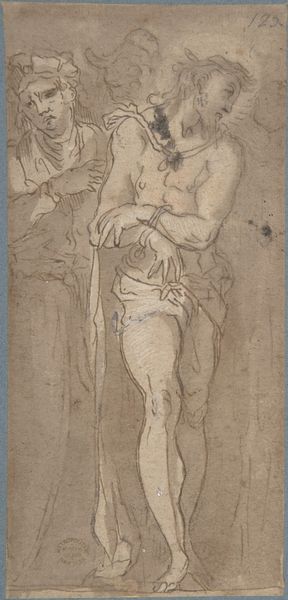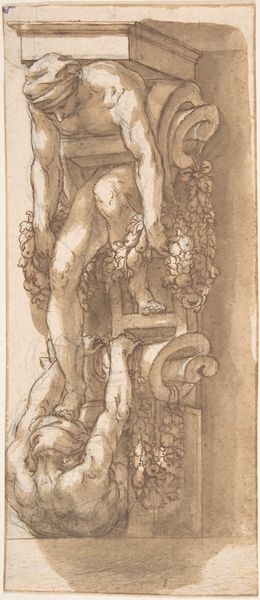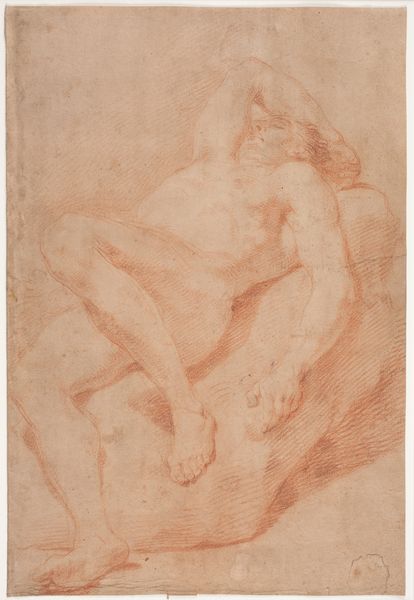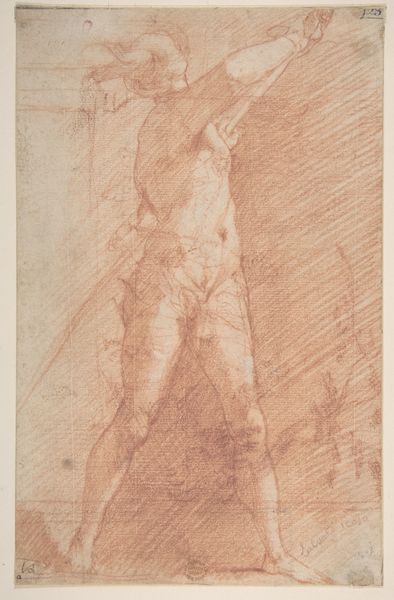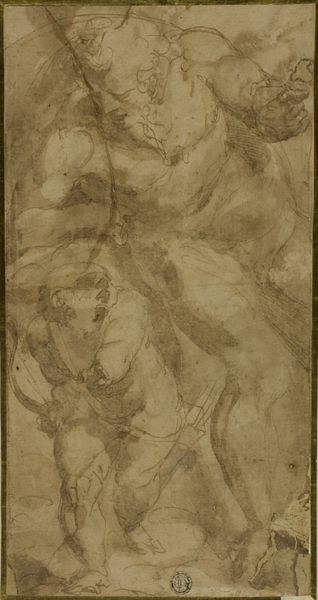
Dimensions: support height 46.8 cm, support width 14.5 cm, height 46 cm, width 14 cm
Copyright: Rijks Museum: Open Domain
Maarten van Heemskerck created this oil on panel depicting Neptune sometime in the 16th century. Heemskerck’s Neptune is not the serene god of classical statuary, but a muscular, dynamic figure, about to strike a sea horse with his trident. The painting reflects the Northern Renaissance interest in classical mythology, but also the anxieties of the time. In the 16th century, the Netherlands was a region of merchants and sailors and also a region in turmoil. The artist may have been alluding to the political storms of his time. Neptune, as a symbol of power and control over the seas, could represent the leaders of the Netherlands or even a warning to those who dared to challenge their authority. The Rijksmuseum's records, along with other historical sources, can help us to understand the complex interplay of artistic expression and socio-political context. Art always reflects, and comments on, the world in which it was created.
Comments
No comments
Be the first to comment and join the conversation on the ultimate creative platform.




